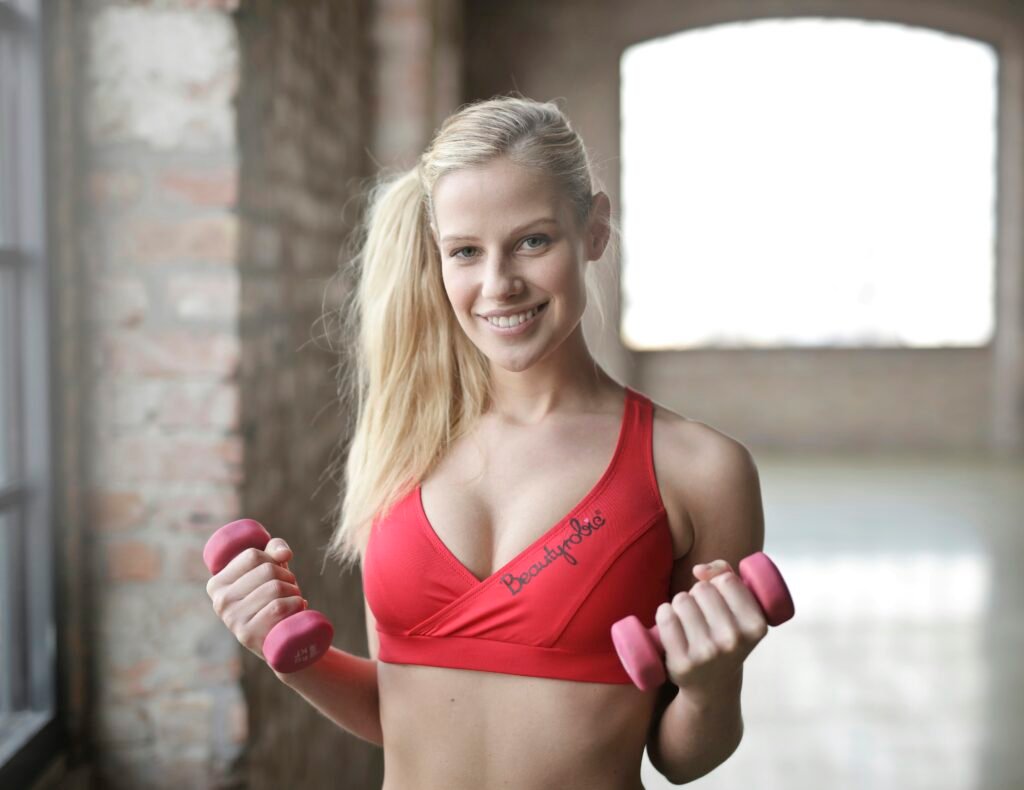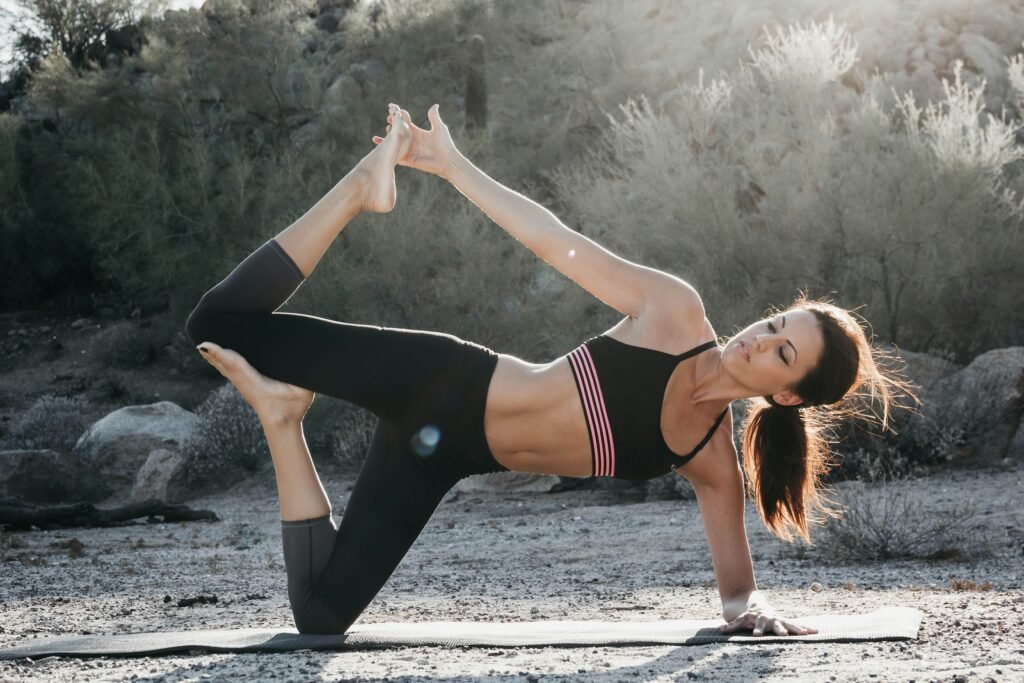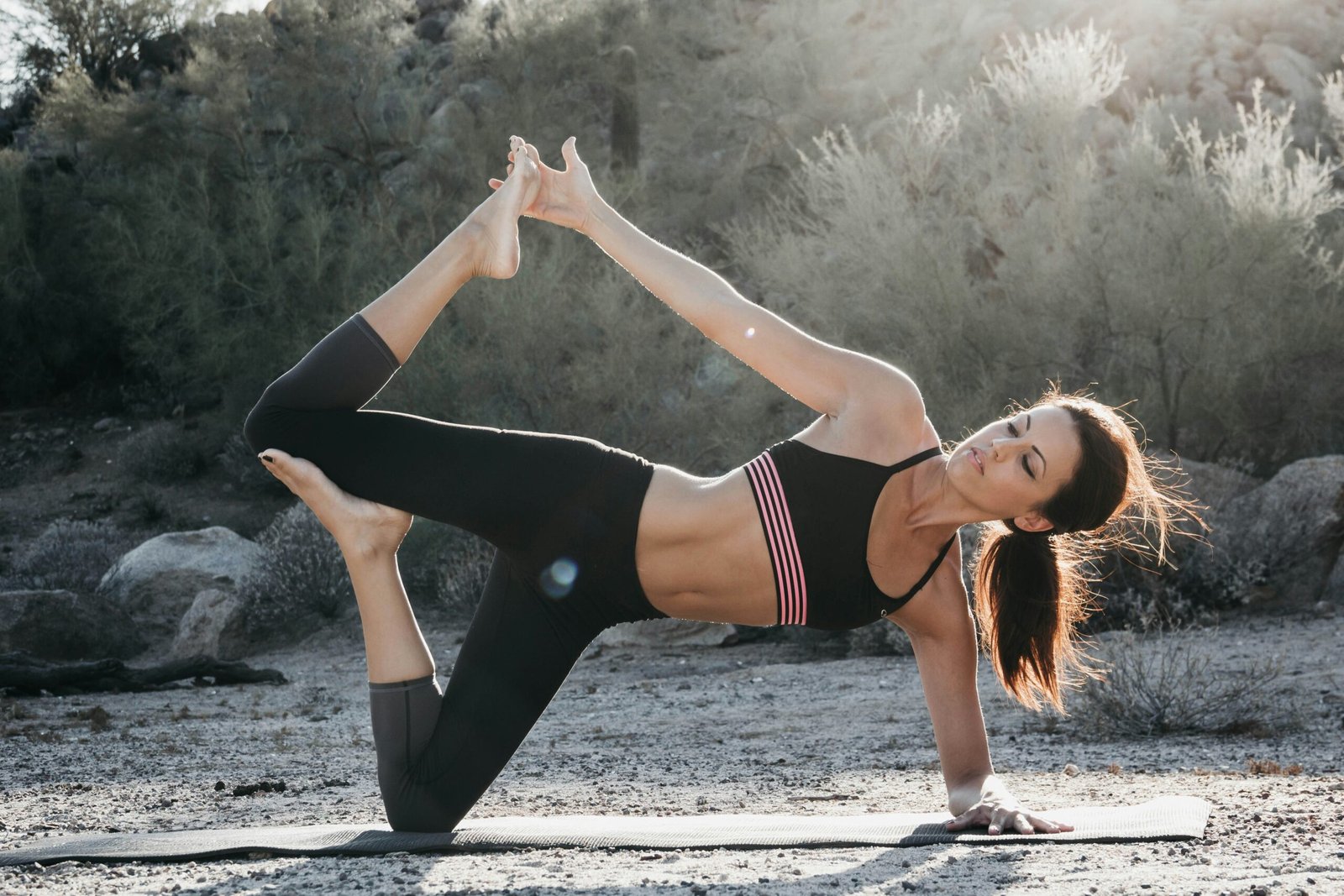Taking Your Fitness to the Next Level: Advanced Bodyweight Training
Ready to take your fitness to the next level? Look no further than advanced bodyweight training! In this article, we will explore the exciting world of advanced bodyweight exercises and how they can help you reach your fitness goals. From explosive plyometric movements to challenging static holds, these exercises will push your strength, endurance, and agility to new heights. With no need for fancy equipment or expensive gym memberships, advanced bodyweight training is accessible to anyone, anywhere. Get ready to elevate your workouts and witness incredible results with this effective and dynamic training method.

This image is property of images.unsplash.com.
Benefits of Advanced Bodyweight Training
Increased Strength and Muscle Development
One of the main benefits of advanced bodyweight training is the significant increase in strength and muscle development. When you progress to more advanced bodyweight exercises, such as one-arm push-ups and pistol squats, you are challenging your muscles to work harder and adapt to the increased demands. This results in stronger, more defined muscles throughout your entire body, from your arms and chest to your legs and core.
Improved Balance and Coordination
Advanced bodyweight training also improves your balance and coordination. As you engage in movements like handstand push-ups and the human flag, you need to find your center of gravity and maintain control over your body. This constant need for balance and coordination not only enhances your physical performance but also carries over into everyday activities, making you more agile and stable on your feet.
Enhanced Mobility and Flexibility
In addition to strength and balance, advanced bodyweight training also enhances your mobility and flexibility. Many advanced bodyweight exercises involve a wide range of motion, which requires your joints and muscles to move freely and efficiently. As you progress and become more flexible, you’ll notice improvements in your overall range of motion, allowing you to perform daily tasks with greater ease and reduced risk of injury.
Effective Full-Body Workout
Another notable benefit of advanced bodyweight training is that it provides a highly effective full-body workout. Unlike traditional weightlifting, which often isolates specific muscle groups, advanced bodyweight exercises engage multiple muscle groups simultaneously. This means you’re not only building strength and muscle, but you’re also working on improving your overall body composition and boosting your metabolism.
Minimal Equipment and Cost
One of the most appealing aspects of advanced bodyweight training is that it requires minimal equipment and cost. Unlike weightlifting, which typically involves expensive gym memberships and specialized equipment, advanced bodyweight exercises can be performed virtually anywhere and with little to no equipment. This makes it a convenient and cost-effective way to take your fitness to the next level without breaking the bank.
Preparation for Advanced Bodyweight Training
Building a Solid Foundation
Before diving into advanced bodyweight training, it’s essential to build a solid foundation. This means focusing on mastering the basics and ensuring you have the necessary strength and stability to safely progress to more advanced exercises. It’s crucial to develop a strong core, stable joints, and proper form before attempting complex movements.
Mastering Basic Bodyweight Exercises
In order to progress to advanced bodyweight training, it’s important to master the basic bodyweight exercises first. These exercises, such as push-ups, squats, and planks, serve as building blocks for more advanced variations. Make sure you can perform these exercises with proper form and control before moving on to the next level.
Improving Core Strength
Core strength plays a crucial role in advanced bodyweight training. A strong core provides stability and helps transfer power throughout the body during complex movements. To improve core strength, focus on exercises like planks, hollow holds, and L-sits. Gradually increase the difficulty and duration of these exercises to continually challenge your core muscles.
Increasing Flexibility
Flexibility is also vital for advanced bodyweight training. You need adequate flexibility to perform exercises like pistol squats and handstand push-ups with proper form and without risking injury. Incorporate stretching and mobility exercises into your routine to improve flexibility. Practice yoga or dedicate specific time to stretching your major muscle groups regularly.
Progressive Overload
To progress in advanced bodyweight training, it’s important to incorporate the principle of progressive overload. This means gradually increasing the difficulty or intensity of your exercises over time. You can do this by adding extra repetitions, increasing the range of motion, or introducing new variations of the exercises. This helps ensure that you continue to challenge your muscles and make continuous progress.

This image is property of images.unsplash.com.
Progressions in Advanced Bodyweight Training
Building Strength with Variations
Once you have mastered the basic bodyweight exercises, you can start building strength by incorporating variations of those exercises. For example, you can progress from regular push-ups to decline push-ups, and then to one-arm push-ups. By gradually increasing the difficulty, you will continue to challenge your muscles and stimulate further strength gains.
Mastering Advanced Movements
As you become more proficient in bodyweight training, you can start mastering advanced movements. These movements require a high level of strength, coordination, and body control. Examples of advanced movements include handstand push-ups, muscle-ups, and the front lever. Practice these movements regularly, gradually increasing your reps and perfecting your form.
Unilateral Exercises for Balance
Adding unilateral exercises to your routine is a great way to improve balance and stability. Unilateral exercises involve working one side of your body at a time, which helps correct muscle imbalances and improves overall coordination. Exercises like single-leg squats and single-arm push-ups challenge your muscles in new ways and enhance your balance and stability.
Dynamic and Plyometric Movements
To further challenge your body and improve explosive power, incorporate dynamic and plyometric movements into your advanced bodyweight training routine. Movements like clap push-ups, jumping lunges, and plyometric squats require rapid and forceful muscle contractions, helping to develop power and agility. Start with low-impact variations and gradually progress to more explosive movements as your strength and coordination improve.
Sample Advanced Bodyweight Workout
Warm-up
Begin your advanced bodyweight workout with a thorough warm-up to prepare your muscles and joints for the upcoming exercises. This can include light cardio, such as jogging or jumping jacks, followed by dynamic stretches to warm up your major muscle groups.
Upper Body Exercises
Incorporate upper body exercises such as one-arm push-ups, diamond push-ups, and pull-ups to target your chest, shoulders, and back. Aim for three sets of 8-12 reps for each exercise, gradually increasing the difficulty as you progress.
Lower Body Exercises
For the lower body, include pistol squats, jumping lunges, and glute bridges to work your legs, glutes, and hips. Perform three sets of 8-12 reps for each exercise, focusing on maintaining proper form and control throughout.
Core Exercises
Strengthen your core with exercises like plank variations, hollow holds, and L-sit progressions. These exercises target your abs, obliques, and lower back. Start with 30-second holds for each exercise and gradually increase the duration as your core strength improves.
Cardiovascular Conditioning
Incorporate cardio intervals, such as high knees, mountain climbers, or burpees, to elevate your heart rate and improve cardiovascular fitness. Perform these exercises in short bursts, followed by brief periods of active recovery. Aim for 3-4 sets of 30-60 seconds for each exercise.
Cool-down and Stretching
Finish your advanced bodyweight workout with a cool-down and stretching routine. This helps lower your heart rate and prevents muscle tightness. Include static stretches for all major muscle groups, holding each stretch for 20-30 seconds.

This image is property of images.unsplash.com.
Tips for Injury Prevention
Proper Technique and Form
Maintaining proper technique and form is crucial to prevent injuries during advanced bodyweight training. Always prioritize good form before adding difficulty or intensity to your exercises. Pay attention to your body alignment and engage the appropriate muscles throughout each movement.
Gradual Progression
While it’s important to challenge yourself, it’s equally important to progress gradually and avoid jumping to advanced exercises before your body is ready. Progression should be slow and steady, allowing your muscles and joints to adapt and become stronger over time.
Listening to Your Body
Your body is your best guide when it comes to training. Listen to any warning signs of pain or discomfort and adjust your workout accordingly. Push yourself, but also know your limits and respect the signals your body sends you.
Rest and Recovery
Intense training can take a toll on your body, so make sure to prioritize rest and recovery. Allow for rest days in your training schedule and ensure you are getting enough sleep to aid in muscle repair and growth.
Incorporating Mobility and Flexibility
Don’t neglect mobility and flexibility exercises. These not only improve your performance but also help prevent injuries. Include exercises such as yoga, foam rolling, and dynamic stretching to keep your muscles and joints mobile and flexible.
Advanced Bodyweight Training Challenges
One-Arm Push-ups
One-arm push-ups are a significant challenge for many advanced bodyweight enthusiasts. This exercise targets your chest, shoulders, triceps, and core. Start with your hand elevated on a step or platform to decrease the difficulty, and gradually lower the elevation as you get stronger.
Pistol Squats
Pistol squats are a demanding exercise that targets your quadriceps, hamstrings, and glutes. This single-leg squat requires significant strength and balance. Begin by holding onto a stable surface for support and gradually reduce assistance as you build strength and stability.
Muscle-ups
Muscle-ups are an impressive upper body exercise that combines a pull-up with a dip. This movement targets your back, chest, arms, and shoulders. Start by mastering pull-ups and dips individually, then progress to performing them in a smooth, fluid motion.
Handstand Push-ups
Handstand push-ups are an advanced exercise that targets your shoulders, triceps, and upper chest. To progress to handstand push-ups, start by developing your handstand against a wall and gradually decrease the support until you can perform full handstand push-ups.
Front Lever
The front lever is a challenging exercise that targets your back, core, and shoulder muscles. It requires tremendous strength and body control. Begin by practicing tuck front levers, gradually straightening your body as you gain strength and control.
Human Flag
The human flag is an ultimate show of strength and body control. This exercise involves holding yourself horizontally on a vertical pole or bar. Start by practicing side plank variations to build core and upper body strength, then progress to the full human flag as you become more advanced.
Nutrition for Advanced Bodyweight Training
Caloric Intake and Macronutrient Balance
To support advanced bodyweight training, it’s important to have an appropriate caloric intake and macronutrient balance. Aim to consume enough calories to fuel your workouts and promote muscle recovery. Opt for a balanced diet that includes a sufficient amount of protein, carbohydrates, and healthy fats.
Sufficient Protein Intake
Protein is crucial for muscle repair and growth. Make sure you’re consuming enough protein to support your advanced bodyweight training. Include protein-rich foods such as lean meats, poultry, fish, eggs, dairy products, legumes, and plant-based protein sources in your diet.
Importance of Hydration
Staying hydrated is essential for optimal performance and recovery. Drink plenty of water throughout the day, especially before, during, and after your workouts. Consider adding electrolyte-rich fluids or sports drinks during intense sessions to replenish lost minerals.
Timing of Meals and Snacks
Timing your meals and snacks properly can enhance your performance and recovery. Aim to consume a balanced meal containing protein, carbohydrates, and healthy fats a few hours before your workout. Additionally, have a snack rich in protein and carbohydrates within an hour after your training session to aid in muscle recovery.
Fueling for Performance
Before an intense training session, choose easily digestible carbohydrates that provide quick energy, such as fruits or whole grains. During longer workouts, consider consuming carbohydrates and electrolyte-rich fluids to maintain energy levels. Experiment with pre- and post-workout nutrition strategies to find what works best for you.
Tracking Progress and Setting Goals
Keeping a Workout Journal
Keeping a workout journal is a valuable tool for tracking your progress in advanced bodyweight training. Write down the exercises you perform, the number of sets and reps, and any notes about your form or difficulty. This allows you to look back and see how far you’ve come and identify areas for improvement.
Recording Personal Records
Recording personal records (PRs) is another effective method of tracking progress. Write down your PRs for specific exercises, such as the number of one-arm push-ups you can perform or the duration of your front lever hold. This not only helps you gauge your progress but also serves as motivation to beat your own record.
Setting Specific and Measurable Goals
Setting specific and measurable goals is essential for continued progress in advanced bodyweight training. Instead of just aiming to “get stronger,” set specific goals like performing a certain number of reps for a particular exercise or holding a challenging pose for a specific length of time. This gives you a clear target to work towards and helps you stay motivated.
Periodic Assessments and Evaluations
Periodic assessments and evaluations are crucial for tracking your progress and ensuring you’re on the right track. Assess your strength, endurance, and flexibility regularly to identify areas that need improvement. Use this information to adjust your training program accordingly and continue making progress.
Incorporating Advanced Bodyweight Training into a Routine
Balancing Advanced and Basic Exercises
To effectively incorporate advanced bodyweight training into your routine, it’s important to find a balance between advanced and basic exercises. While challenging yourself with advanced movements, don’t neglect the basic exercises that serve as the foundation of your strength and technique. Aim for a mix of both in your training program.
Weekly Training Split
Establishing a weekly training split can help you organize your workouts and ensure that you’re targeting all major muscle groups evenly. For example, you can dedicate one day to upper body exercises, another day to lower body exercises, and a third day to core and cardiovascular conditioning. This allows for proper recovery and prevents overtraining.
Combining Strength and Cardio
For a well-rounded training routine, incorporate both strength exercises and cardiovascular conditioning. This combination not only improves your overall fitness but also helps burn calories and promote a healthy heart. Alternate strength-focused days with cardio-focused days to maintain a balanced routine.
Periodization and Variation
Incorporating periodization and variation in your training program is key to avoiding plateaus and continually challenging your body. Periodization involves cycling the intensity or volume of your training over specific time frames, while variation includes changing exercises, rep ranges, or training styles. By periodically changing your routine, you keep your body guessing and maximize your progress.
Active Recovery Days
Don’t forget to incorporate active recovery days into your routine. These are days dedicated to lighter exercises, stretching, or low-impact activities like yoga or swimming. Active recovery promotes blood flow to your muscles, aids in recovery, and reduces the risk of overuse injuries.
Taking Care of Mental Well-being
Enjoyment and Fun in Training
While advanced bodyweight training can be physically challenging, it’s essential to find enjoyment and have fun in the process. Discover exercises and movements that you genuinely enjoy and incorporate them into your routine. This not only makes your workouts more pleasant but also helps maintain long-term adherence to your training program.
Stress Management Techniques
Exercise, including advanced bodyweight training, can serve as an effective stress management technique. Engaging in physical activity helps release endorphins, which improve mood and reduce stress. Take advantage of your workouts as a way to release tension and clear your mind.
Importance of Rest and Sleep
Rest and sleep are vital for both physical and mental well-being. Aim to get enough quality sleep each night to support your training and recovery. In addition, allow yourself regular rest days to recharge and prevent burnout. Your mental well-being will greatly benefit from these periods of rest.
Positivity and Self-Motivation
Maintain a positive mindset and practice self-motivation throughout your advanced bodyweight training journey. Celebrate your achievements, no matter how small, and use positive self-talk to stay motivated. Surround yourself with supportive individuals or join exercise communities that uplift and encourage you along the way.
By incorporating advanced bodyweight training into your fitness routine, you can enjoy the countless benefits it offers. From increased strength and muscle development to improved balance and coordination, the rewards are well worth the effort. With proper preparation, progressions, and a focus on injury prevention, you’ll achieve new levels of physical fitness and take your overall well-being to new heights. Remember to fuel your body with proper nutrition, track your progress, and prioritize both physical and mental rest. Embrace the challenges and enjoy the journey as you push yourself to achieve your goals through advanced bodyweight training.



